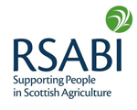If a full reseed is not always possible due to factors such as stocking pressures or thin top soil not permitting deep cultivation. For thin or badly poached pastures, pasture rejuvenation should be considered a viable alternative to a complete reseed.
Weeds are low yielding and unpalatable, with a very low response to nitrogen. You cannot afford to tolerate more than 30% weed grasses in your swards. It is the weeds that invade the pastures and gradually replace the existing sown grass ley that cause the most damage to productivity and this can lead to a huge reduction in yield. Pasture rejuvenation should not be considered for old pastures infected with creeping bent and other grass weeds as any new grass would struggle to compete.
Successful pasture rejuvenation occurs when competition from the existing sward is minimal, these conditions occur during early spring before the grass is growing too quickly or after second cut silage/early autumn when the soil temperature is still high.
An adequate degree of moisture in the seed bed is essential for the new sown seed to germinate and establish.
First you need to assess the condition of the sward before deciding how to improve it. Your local Watson Seeds seed specialist will be happy walk the field or fields and discuss a course of action.
For successful pasture rejuvenation the existing grass sward should be removed or retarded, either by grazing hard after silage cut or by spraying with a suitable herbicide. Moisture is most important for rapid establishment of newly sown grass seed.
With increasing numbers of farmers choosing to rejuvenate a grass sward as opposed to a full reseed the techniques and equipment available to make this a success has greatly advanced in the last few years. The application of slug pellets when drilling in rows can be very beneficial.
There is a range of equipment available for pasture renovation, for example:
Einboch/Optico grass harrows: Work ok if adequate moisture in the soil or immediately after taking a crop of hay or silage.
Moore Uni-Drill/Guttler: Drills the seed into the soil and achieves good seed to soil contact. Closer row spacing than the Aitchison or Duncan drills.
Aitchison/Duncan drill: Ideal for use when there is a risk of dry, cold conditions and competition from existing sward.
Agriseeder from Erth Engineering: Modified version of a Duncan drill. Can cope well with uneven ground.
Vredo: An effective slit seeder used by some contractors.
Vaderstad: A very versatile disc type multi-purpose drill
Mr Robert Dalrymple, owner of Kings Arms Farm, Ballantrae and his Farm Manager, Andrew MacLean, the low cost solution to upgrade the grass content of the silage field was to overseed it with the Castle Rejuvenation grass mixture. The establishment costs were substantially reduced and the field was available very quickly for grazing or silage.
After a second cut of silage was taken in August, the field was harrowed to remove trash and grazed hard with sheep before and after drilling. The grazing by sheep reduces the competition from the existing sward, which is usually the main limiting factor in establishing new grass in this environment. The sheep were removed just as the newly introduced grasses started to germinate, they were then reintroduced periodically to control the grass growth over the next few months.
‘Overseeding has given us another three years extra production from this field. It has transformed the production in both quality and yield. The improvements to this grass sward more than justify the cost of overseeding’ - Andrew MacLean




